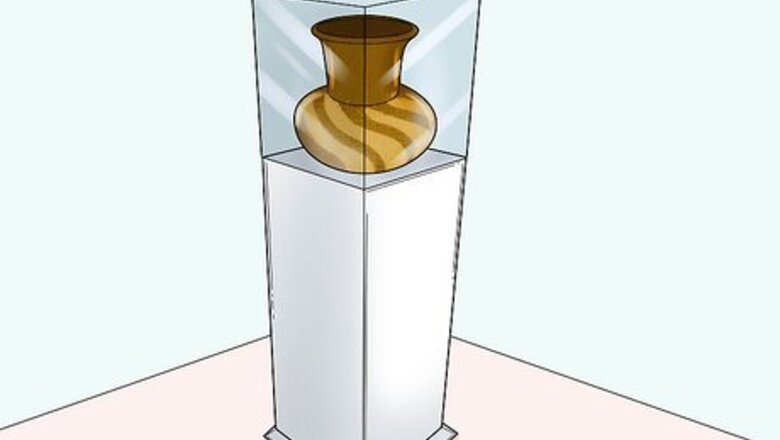
views
Put small objects on pedestals and stands.

If your objects are tiny, they might be hard to see. Stand them up on pedestals and plinths so they’re at eye level for viewers. Plain white pedestals work well with almost any object, and they’ll draw attention to whatever is in the center. Stands like these work well for tools, jewelry, and antique pottery.
Keep objects near their case or container.

Tools and jewelry sometimes come in special boxes. If your objects did, try to keep them near or next to their containers. If the containers aren’t great for display, you don’t have to keep them inside, but it’s always nice to see where an object was stored before it was in a museum. If the case does work well for a display (if it has an open top or a clear front panel), you can absolutely keep the objects inside.
Hang fabric and textiles.

Long, large pieces of fabric can be tough to display. If you’re able to, try hanging them up on the wall so they can be seen in all their glory. This works well for blankets, quilts, and tapestries that have lots of fine details. If the object is too fragile to display, consider framing it instead.
Hang paintings and photographs on the wall.

Put items like these into sturdy frames with museum glass. Use a wire on the back of the frame and attach the artwork to the wall. If the museum wall is stone or concrete, use a masonry drill bit to ensure the art is stable and secure. Museum glass will help cut down on UV rays coming in that might fade or warp the artwork.
Use digital picture frames for slideshows.

If you have a lot of photos to display, consider digitizing them. Then, you can set up large monitors and let museum guests watch the slideshow as the pictures flip through. This is great for old, historical photos that are too fragile to display, too. Get creative with how you display your monitors. If a traditional TV style isn’t the look you’re going for, pick out some vertical display monitors that span from floor to ceiling instead.
Label every object.

Let your guests know what the object is and where it’s from. Try to include the title plus a short introduction about the piece. Keep the label in first person, and try to avoid fancy jargon that might be hard to read. Try to keep the labels conversational. The guests should enjoy reading through them as they walk throughout the displays.
Point lights at the objects.

Use spotlights on the ceiling to draw attention to each object. Halogen lights are common in museums, but they do produce a lot of heat. LED lights are less hot and won’t damage art pieces as much, but they can change color as they age. You can also set up dimmer lights to control the intensity of each bulb.














Comments
0 comment